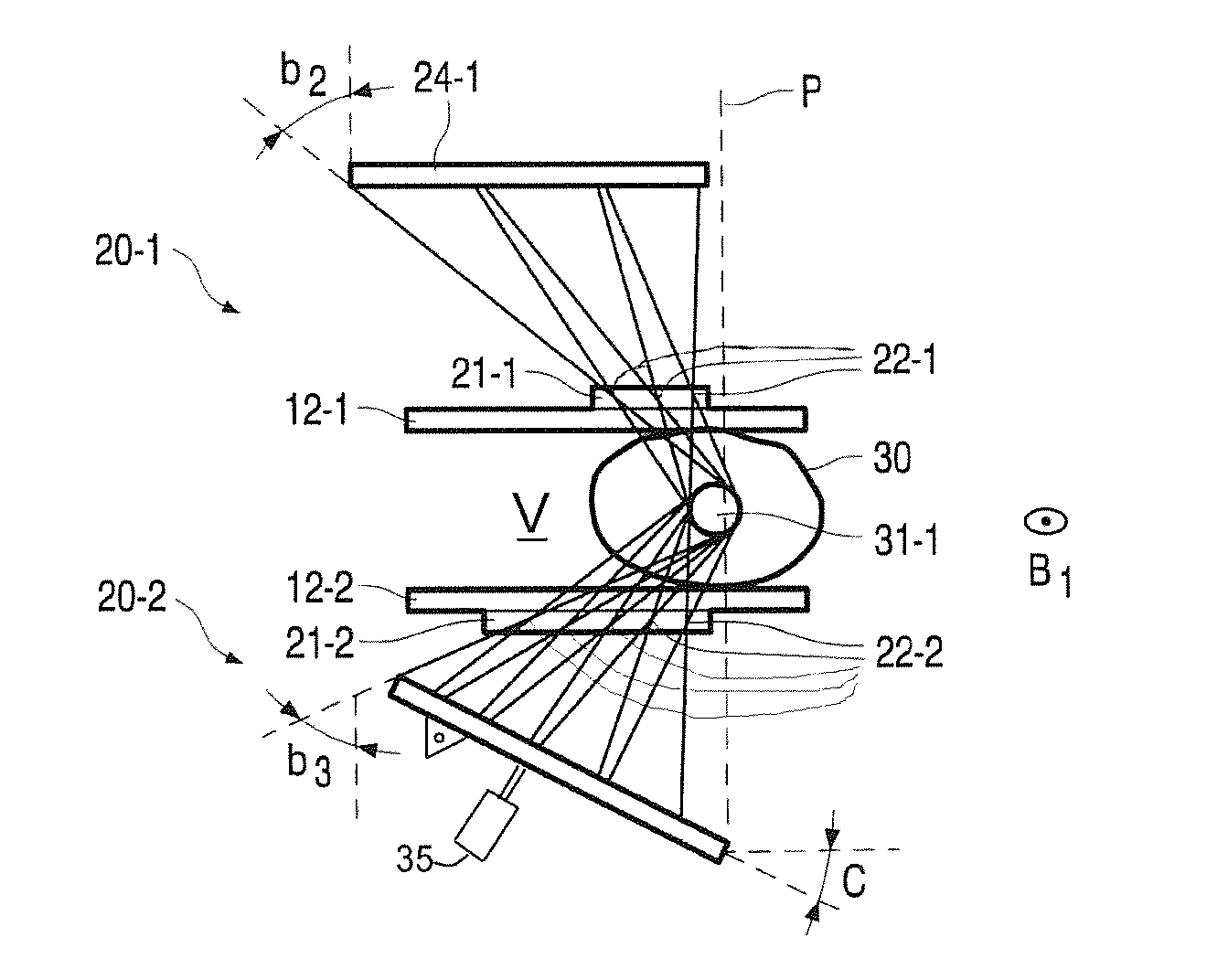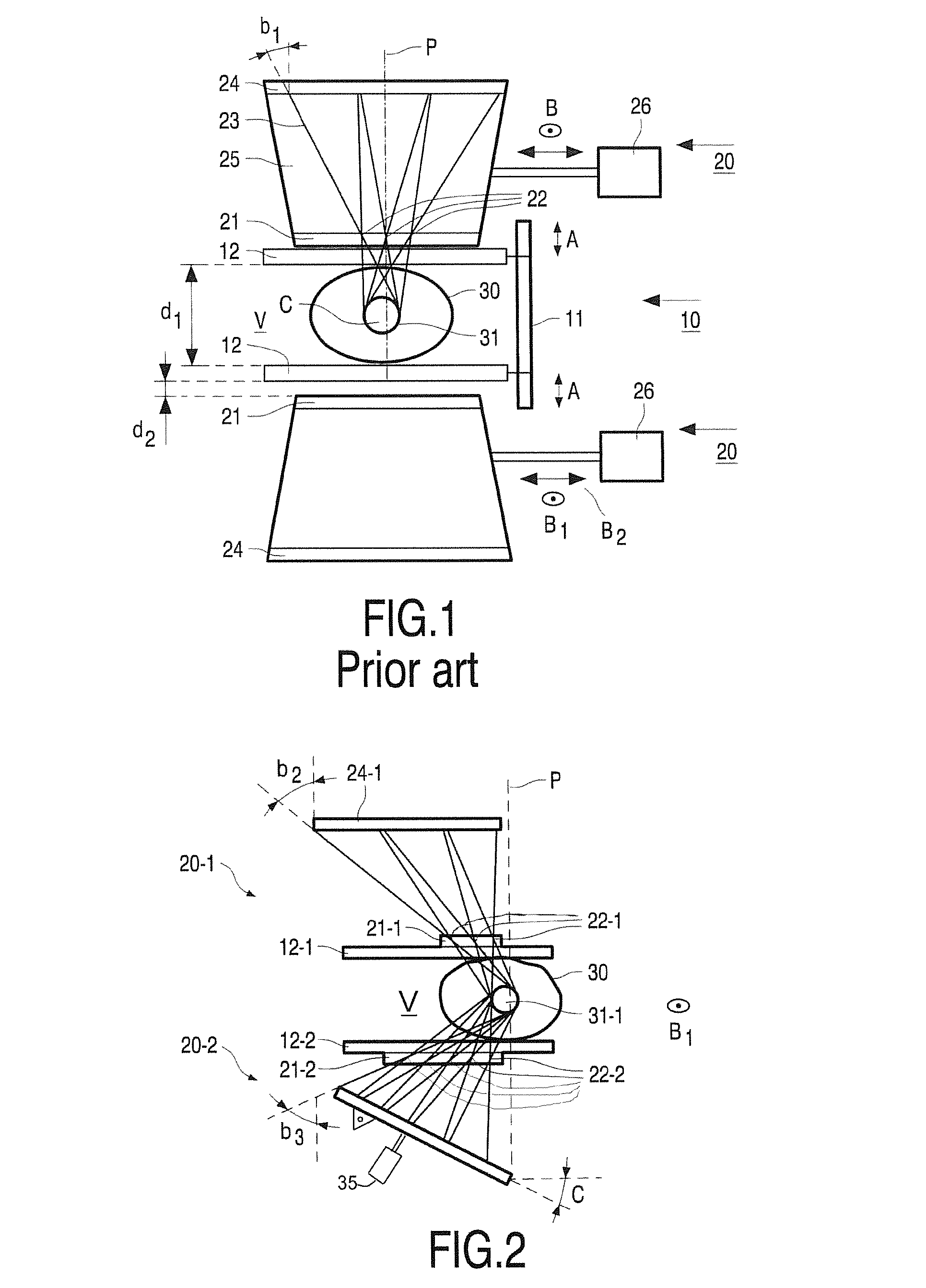Gamma radiation breast imaging apparatus
a breast imaging and gamma radiation technology, applied in the field of gamma radiation imaging apparatus, can solve the problems of insufficient accuracy of relative large fraction of images, discomfort or even pain of patients, and the number of images being taken is higher than the necessary number, so as to increase the range of angles and increase the surface area of the image. , the effect of preventing nois
- Summary
- Abstract
- Description
- Claims
- Application Information
AI Technical Summary
Benefits of technology
Problems solved by technology
Method used
Image
Examples
Embodiment Construction
[0106]FIG. 1 shows diagrammatically an apparatus according to the prior art, in particular according to the cited document WO2010 / 014001, with a breast 30, a positioning device 10, and two gamma cameras 20-1, 20-2 generally above and below the breast to be imaged.
[0107]It is noted that one or more parts present in this prior art apparatus may, and preferably are, also present in the apparatus according to the invention, albeit sometimes in a modified form. Thus, for reasons of avoiding repetition, it is hereby assumed that a part or parts indicated in FIG. 1 or discussed with reference to FIG. 1 but not show or discussed with reference to all the other figures may be present therein as well.
[0108]Now turning to FIG. 1. The object or breast positioning device 10 comprises a frame 11, e.g. a frame to be placed on the floor of an exam room. The frame 11 supports two positioning members, embodied as plates 12, as is shown in a mutually parallel orientation, as is shown and practically s...
PUM
 Login to View More
Login to View More Abstract
Description
Claims
Application Information
 Login to View More
Login to View More - R&D
- Intellectual Property
- Life Sciences
- Materials
- Tech Scout
- Unparalleled Data Quality
- Higher Quality Content
- 60% Fewer Hallucinations
Browse by: Latest US Patents, China's latest patents, Technical Efficacy Thesaurus, Application Domain, Technology Topic, Popular Technical Reports.
© 2025 PatSnap. All rights reserved.Legal|Privacy policy|Modern Slavery Act Transparency Statement|Sitemap|About US| Contact US: help@patsnap.com



